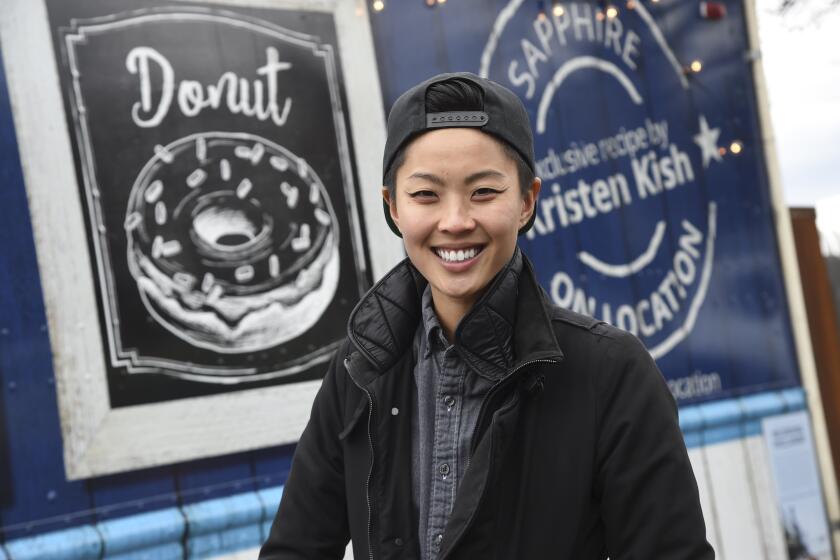Passing the baton in Oregon’s Willamette Valley
- Share via
In 1966, Eyrie Vineyards founder David Lett planted Pinot Noir vines in Oregon’s Willamette Valley, hoping he’d found a place that shared traits with his beloved Burgundy. Four years later, the man who would come to be known as “Papa Pinot” made his first commercial harvest.
Within the decade, half a dozen families, every bit as intrepid, followed him to the land, an unlikely collection of former engineers and liberal arts majors with a perceptible countercultural streak. Their perseverance and collaboration resulted in one of the great success stories in modern American winemaking, a robust industry composed largely of small family wineries excelling in cool climate varieties.
Lett died in 2008; most of the other pioneers have more or less retired, leaving their sons and daughters to take up the reins: Brother and sister Alex and Allison Sokol-Blosser now run the eponymous winery founded by their parents; Adam Campbell took over from his parents, Pat and Joe, at Elk Cove; Michel, Maria and Luisa Ponzi have ably steered Ponzi Vineyards into the new century; and similar transitions are underway at Bethel Heights, Lange, Maysara and Chehalem.
Taken together, it’s like a movement in itself, a cementing of the family bonds that are the anchor of the region. “It’s more stewardship, not ownership,” says Alex Sokol-Blosser. “It’s not ours to sell but to make better and enrich.”
Dick Ponzi, who with his wife, Nancy, founded their brand in 1970, was the first to give up the reins. “It happened pretty naturally,” he says. “Each of them had different talents. Maria [now director of sales] was the writer; Luisa [the winemaker] was the ‘bug’ girl, always in the dirt, the little scientist; and Michel [the chief executive] was a musician, but he had an inkling for computers.”
By the early ‘90s, the younger Ponzis were steering the brand, in the cellar and in the market. Dick stays on to fix things, to tinker with systems — and to see that their new winery, completed in 2008 and entirely his design, is running smoothly.
“When we first sat down to discuss the blend and taste wines,” says Dick, “well, that was a moment a parent would treasure. But after two or three years, they stopped inviting me. It all happened very quietly, but it was OK; that was how I knew they were on their way.”
Ben Casteel now makes the wine at Bethel Heights, a mantle he inherited at age 27 from his father, Terry, afterParkinson’s diseasecaused him to lose his sense of smell. With their wives, Terry and his twin brother, Ted, founded the winery in 1977; it is now co-owned by 11 family members, and the estate vineyards are managed by his cousin Mimi Casteel.
One generation in, the cousins feel as if they’re more in sync with picking decisions than their twin fathers ever were but are willing to admit their amity may have more to do with vine maturity than with their own. “My dad was surprised at how I threw myself into maintaining the legacy blocks,” says Mimi, “but every year the best fruit comes from those blocks — and that’s our legacy too.”
Papa Pinot himself had a son, Jason, now charged with steering a course for the brand his father began. The elder Lett presided over a winemaking style so traditional it almost felt like an artifact — released several years after the vintage, the wines were famously obtuse in youth, giving up almost nothing until seven, 10, 12 years in, when they would reveal their delicate character. The style certainly didn’t square with a grab-and-go wine culture.
In 2009, in just his second solo vintage, Jason Lett is producing wines that remain very traditional but also brighter, airier, more expressive in youth than his father’s ever were, even as they adhere to a classic Eyrie frame. The wines seem to reflect an uncanny balance not only of fruit and structure but also of past and present — a balance that Lett took great pains to achieve.
“I’ve come to accept that I’ll never be the person who built the boat, just the person who has to sail it,” says Lett. “It’s important to cleave true to the course it struck, but that doesn’t mean I can’t take it to places it’s never been.”
More to Read
Eat your way across L.A.
Get our weekly Tasting Notes newsletter for reviews, news and more.
You may occasionally receive promotional content from the Los Angeles Times.










